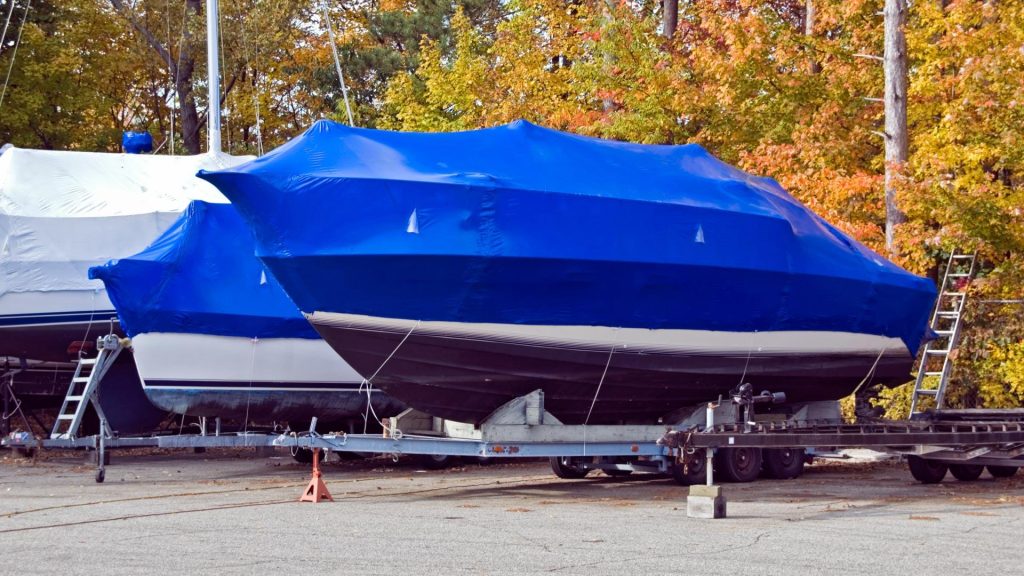When the boating and RV seasons come to a close, one of the most important steps for owners is ensuring their investment stays protected during the offseason. Proper storage coverage is more than just a formality—it’s a crucial part of maintenance that can save you from costly repairs and unexpected damage. In this article, we’ll explore essential tips for offseason storage coverage specifically tailored for boats and RVs. Whether you’re a seasoned owner or new to the lifestyle, understanding how to safeguard your vehicle during the months of downtime will give you peace of mind and keep your adventures on track year after year.
Table of Contents
- Choosing the Right Storage Location for Optimal Protection
- Preparing Your Boat and RV for Long-Term Storage
- Essential Maintenance Tips to Prevent Damage During the Offseason
- Maximizing Security and Monitoring While in Storage
- In Summary
Choosing the Right Storage Location for Optimal Protection
Selecting the ideal spot to store your boat or RV during the offseason can make all the difference in preserving its condition and value. Consider locations that offer protection from harsh weather elements such as heavy rain, snow, and UV rays. Covered storage options like garages, storage sheds, or dedicated indoor facilities provide a barrier against moisture and temperature extremes, significantly reducing the risk of rust, mold, and sun damage. If indoor storage is not feasible, opting for a spot that offers natural shading or investing in high-quality, breathable covers can also be effective alternatives.
In addition to environmental protection, safety is paramount. Choose locations with reliable security measures including surveillance cameras, gated access, or on-site personnel to deter theft and vandalism. Easy access for maintenance checks during the offseason is another factor often overlooked—pick a storage site that allows you to regularly inspect your vehicle or vessel without hassle. Ultimately, balancing convenience, security, and environmental protection will ensure your boat or RV stays in top shape, ready for its next adventure.
- Indoor storage: Best for maximum protection.
- Outdoor shaded areas: Minimizes sun damage when indoor isn’t an option.
- Secure facilities: Essential for theft prevention.
- Accessibility: Allows regular maintenance and inspection.
Preparing Your Boat and RV for Long-Term Storage
Before tucking away your boat or RV for the offseason, thorough preparation is essential to prevent damage and maintain value. Start by cleaning both inside and out to remove dirt, salt, and debris that can cause corrosion or mold over time. For boats, be sure to drain all water systems, including bilge pumps and live wells, while adding fuel stabilizer to the tank to keep the engine components in good shape. RV owners should similarly drain plumbing lines and appliances, checking seals and gasketing for cracks to avoid leaks during storage. Don’t forget to top off tires with air and consider placing them on blocks to reduce pressure and prevent flat spots.
Next, protect your investment by covering it with durable, breathable covers designed specifically for your model. These covers guard against UV rays, moisture buildup, and critter infestations that can wreak havoc during long-term storage. Additionally, disconnect batteries and store them in a climate-controlled area to extend their lifespan. For enhanced security and peace of mind, use tire locks and ensure your storage facility offers adequate lighting and surveillance. Taking these steps not only safeguards your equipment but also simplifies the process of getting back on the road or water when the next season rolls around.
Essential Maintenance Tips to Prevent Damage During the Offseason
Proper upkeep before storing your boat or RV is crucial to avoid costly repairs and ensure longevity. Start by giving your vehicle a thorough cleaning to remove any dirt, salt, or grime that can cause corrosion over time. Pay special attention to the engine and undercarriage, where moisture can accumulate and create rust. Don’t forget to drain all water systems, including tanks, pipes, and pumps, to prevent freezing and cracking during colder months. Applying protectants to rubber seals and tires will keep them supple, avoiding dry rot or cracking. Additionally, disconnect batteries and store them in a cool, dry place—or use a trickle charger to maintain optimal charge levels throughout the season.
Key offseason maintenance tasks include:
- Changing the oil and replacing filters to safeguard the engine from corrosive substances.
- Lubricating moving parts such as hinges, locks, and slide-outs to prevent rust and stiffness.
- Covering your vehicle with a breathable, weather-resistant cover designed specifically for boats or RVs.
- Inspecting and sealing any cracks or openings to keep pests and moisture out.
- Removing or elevating tires to reduce flat spots and tire degradation.
Taking these proactive steps will keep your investment protected and ready for the next adventure, eliminating surprises when the busy travel season rolls around again.
Maximizing Security and Monitoring While in Storage
Ensuring your boat or RV remains secure during the offseason requires a multi-layered approach. Start by installing visible security devices like surveillance cameras and alarm systems designed for outdoor use. Modern smart security systems allow you to monitor your vehicle remotely via your smartphone, providing real-time alerts if any unusual activity is detected. In addition to electronic measures, consider securing access points with heavy-duty locks and wheel clamps to deter opportunistic theft. For extra peace of mind, placing your vehicle in a well-lit, fenced area with controlled entry significantly reduces the chances of tampering or vandalism.
Regular monitoring, even while in storage, is key to early detection of potential problems. Schedule frequent physical inspections to check for signs of intrusion, water damage, or pest infestations. To streamline this process, many owners turn to technology solutions like motion sensors and temperature monitors that notify you of environmental changes that could affect your vehicle’s condition. Don’t overlook the power of community—teaming up with nearby storage users or neighbors to share vigilance can create an informal neighborhood watch, adding another layer of protection beyond technology and locks.
- Install weatherproof security cameras with remote access
- Use reinforced locks and wheel immobilizers
- Keep the storage area well-lit and enclosed
- Employ smart sensors for temperature and motion detection
- Conduct routine in-person inspections
- Coordinate with neighbors for shared security watch
In Summary
Proper offseason storage is essential to protect your investment and ensure your boat or RV is ready for adventure when the season returns. By following these coverage tips—choosing the right cover, preparing your vehicle for storage, and conducting regular maintenance checks—you can avoid costly damage and preserve the longevity of your recreational vehicle. Taking the time now to safeguard your boat or RV will make your next outing all the more enjoyable and worry-free. Happy storing, and here’s to many more miles and waves ahead!





